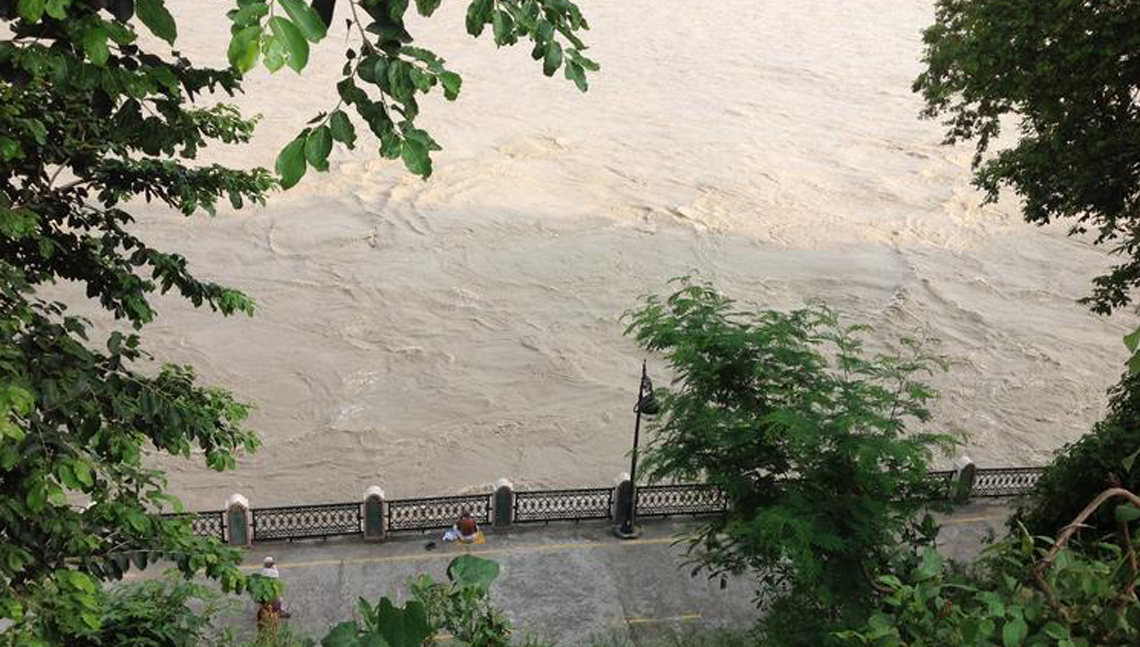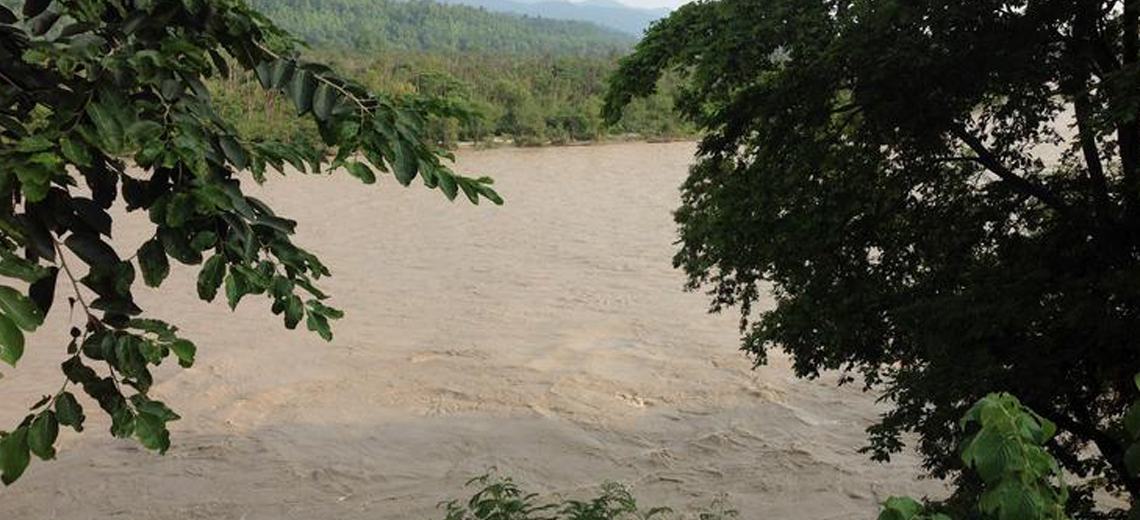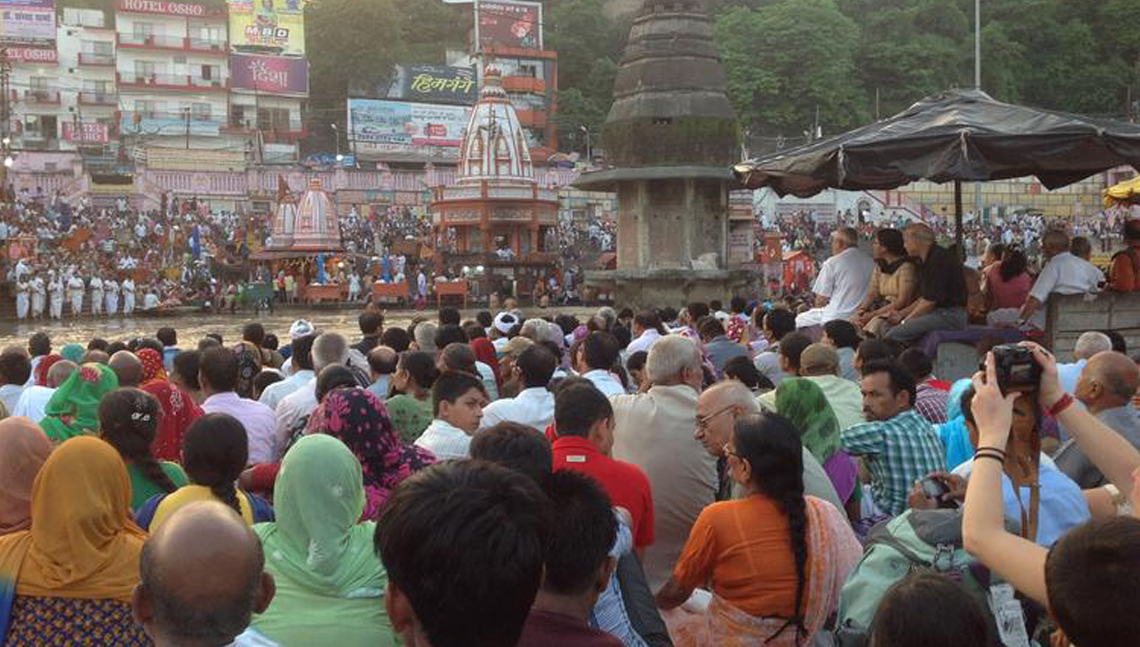The River of Life
What is it about the gaze on water that stills the mind and soothes, even while the same body of water may be raging as it flows swiftly by?

The only answer I have to that question is that a meditative gaze on water soothes the mind because it feels a sense of belonging; a sense of coming home even. And, in that moment of recognition, stills with the realization that peace lies in learning to flow with the river of life.
A week ago, I was on a flight to Delhi when I read about the magnificence of the evening aarti* performed on the banks of the river Ganga in Varanasi. This was in Jetwings, an in-flight magazine.
Destiny was calling perhaps because I was scheduled to visit Mussoorie post speaking at an IAMAI convention in Delhi.
I am not a follower of rituals. Nor do I pay much credence to the belief that the waters of the river Ganga will wash away all sins and grant moksha*. But I have long wished to see the river Ganga after hearing so much about the greatness of this magnificent river on whose banks an entire ancient civilization flourished; a civilization that gave the world much knowledge and wisdom. Not to mention Sanatana Dharma* and the Hindu culture .
Little wonder then that the river is seen by Hindus as the river of life! Though, admittedly, more in an ethereal sense today than respect for the fact that it is the waters of this great river that has sustained life on a large tract of the Indian subcontinent for centuries.
Anyway, this trip to Mussoorie, I was seized by a compulsion to see the Ganga. The Resort Manager, Rajesh Pandey, was kind enough to arrange the trip and even accompanied me. May God bless him and Puran, who drove us there and back.
Perhaps it is the conditioning a child of a Hindu family is inevitably subject to. But the first sighting of the Ganga enthralled, accompanied by a huge swell of sentimental feeling.

After a brief stop over in Rishikesh, we hurried onto Haridwar as we were told we had to be there well in time if we were to get a good view of the evening aarti*.
On reaching Haridwar, we parked the car and embarked on the long walk to the aarthi* venue. The walk was distressing because the surroundings were so filthy that it was hard to believe that the place was considered holy. Yet another one of the great contradictions that is India!
I was so distressed and ashamed of the filth everywhere that I lectured the poor guy who requested for a donation to keep the evening aarti* tradition going. I told him that I hoped the money would be used to clean the place as well. I further expressed, “Jis Ganga ko pujthe hai, wahi itna gandigi kyon?” Translated, I said ‘How can we worship the Ganga and yet, allow so much filth?’
But all those feelings of distress disappeared when the aarti began. What an experience! Phenomenal, just phenomenal!
It was truly a magnificent sight. The line of priests on the opposite bank chanting mantras. The fading day light being replaced by the glowing light from the aarti* lamps – luminescence of life itself!

Evening aarti by the banks of the Ganga in Haridwar
But wait, there’s more!
The hordes of people waiting patiently till the aarthi* began with the rich rubbing shoulders with the less well-to-do. No discrimination here!
And when the aarthi* finally started, an unbelievable pin drop silence ensued. Unbelievable because Indians are not known for their ability to keep silent.
Looking around, I wondered if the people gathered around me even realized why the Ganga came to symbolize so much in the Hindu way of thinking?
That perhaps it was because the wisdom of the ancient rishis led them to understand that water sustains life. And, therefore, the river must be appreciated through reverence? Definitely accounts for why we say Ganga maiya.*
Perhaps the rishis realized that the river was life itself.
Springing, as it did, from the womb of the Himalayas.
Growing in strength, nourished by its mother’s rich, nutritional soil and herbs.
Learning to navigate obstacles in the form of boulders and great falls into ravines.
Before finally coming of age to become the parent and nourish the people of the plains below
But in the end, it doesn’t really matter if the people there understood why the Ganga was so special. Because, the faith…the unbelievable faith gets to you. So much positive energy that one wonders if the Ganga is holy or whether it’s the faith that bestows holiness on the river.
Ah, if only humankind realized the power of that collective, positive energy. And harnessed it to do good elsewhere. Now, that would create a river of life on another plane altogether. I wish!
*aarti – the word means a Hindu religious ritual of worship, where light from wicks soaked in ghee (purified butter) or camphor is offered to one or more deities.
*moksha – a transcendent state attained by being freed from the cycle of rebirth.
*Sanatana Dharma – a Sanskrit phrase meaning the eternal law, or the eternal way of life. Sanatana Dharma was the original name for Hinduism.
*Maiya – mother.
Lata Subramanian, the author, is Chief Marketing Officer of Sterling Holiday Resorts. This blog was written in her personal capacity as a hobbyist writer and blogger.

